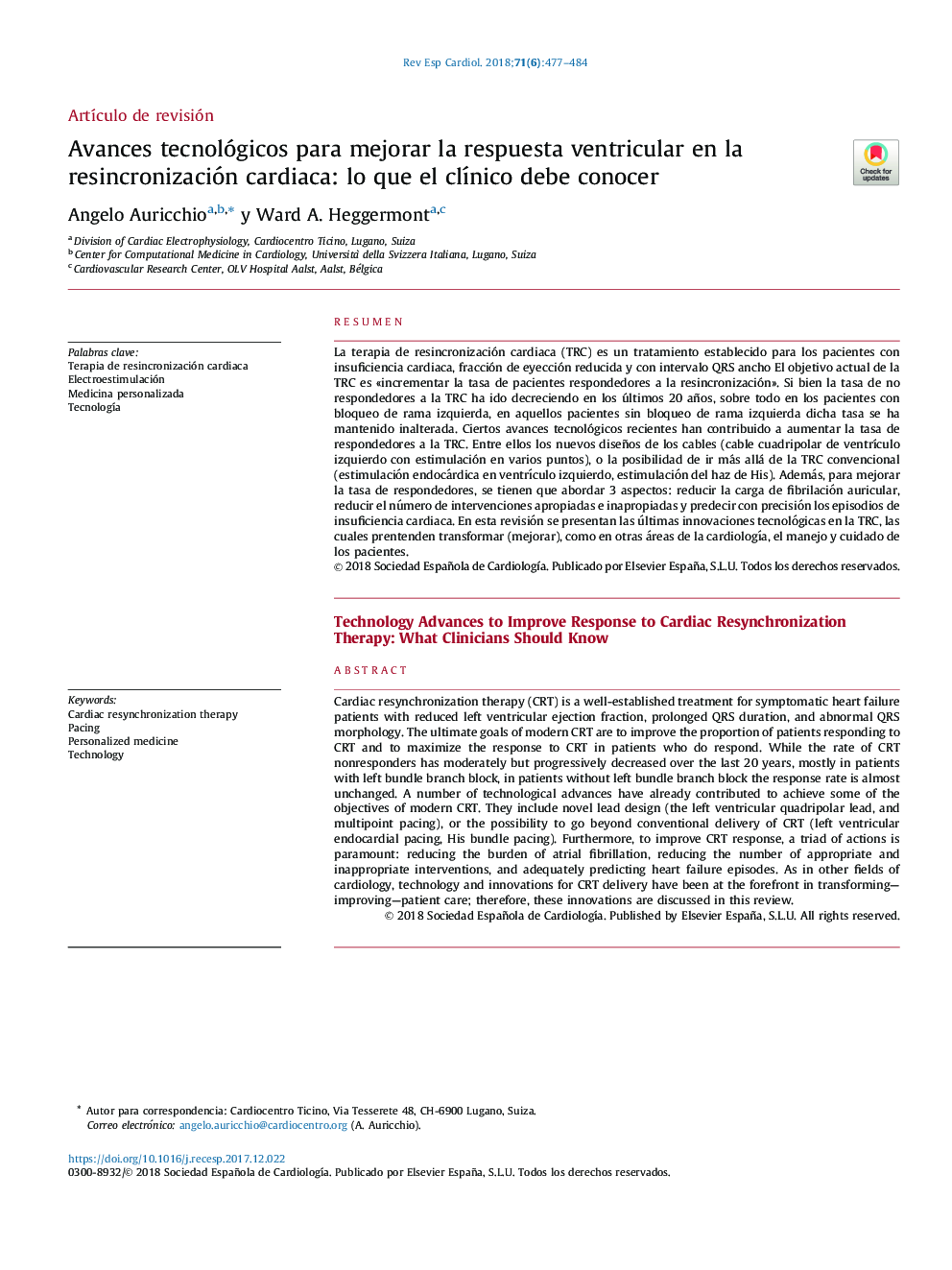| Article ID | Journal | Published Year | Pages | File Type |
|---|---|---|---|---|
| 8676423 | Revista Española de Cardiología | 2018 | 8 Pages |
Abstract
Cardiac resynchronization therapy (CRT) is a well-established treatment for symptomatic heart failure patients with reduced left ventricular ejection fraction, prolonged QRS duration, and abnormal QRS morphology. The ultimate goals of modern CRT are to improve the proportion of patients responding to CRT and to maximize the response to CRT in patients who do respond. While the rate of CRT nonresponders has moderately but progressively decreased over the last 20 years, mostly in patients with left bundle branch block, in patients without left bundle branch block the response rate is almost unchanged. A number of technological advances have already contributed to achieve some of the objectives of modern CRT. They include novel lead design (the left ventricular quadripolar lead, and multipoint pacing), or the possibility to go beyond conventional delivery of CRT (left ventricular endocardial pacing, His bundle pacing). Furthermore, to improve CRT response, a triad of actions is paramount: reducing the burden of atrial fibrillation, reducing the number of appropriate and inappropriate interventions, and adequately predicting heart failure episodes. As in other fields of cardiology, technology and innovations for CRT delivery have been at the forefront in transforming-improving-patient care; therefore, these innovations are discussed in this review.
Keywords
TRCMPPNYHAFEVIauriculoventricularElectroestimulaciónNew York Heart AssociationBRIventrículo izquierdoBloqueo de rama izquierdaCardiac resynchronization therapyTerapia de resincronización cardiacaTecnologiaTechnologymedicina personalizadaPersonalized medicinePacingfracción de eyección del ventrículo izquierdo
Related Topics
Health Sciences
Medicine and Dentistry
Cardiology and Cardiovascular Medicine
Authors
Angelo Auricchio, Ward A. Heggermont,
